
Today's lunch dish consists of beef, sautéed with tomatoes, onions and served with fried banana slices, on a mattress of rice. Perfect the whole family!
El platillo del almuerzo de hoy consiste en carne de res, salteada con tomates, cebollas y acompañadas con tajadas de platano fritas, sobre un colchón de arroz. ¡Perfecto toda la familia!
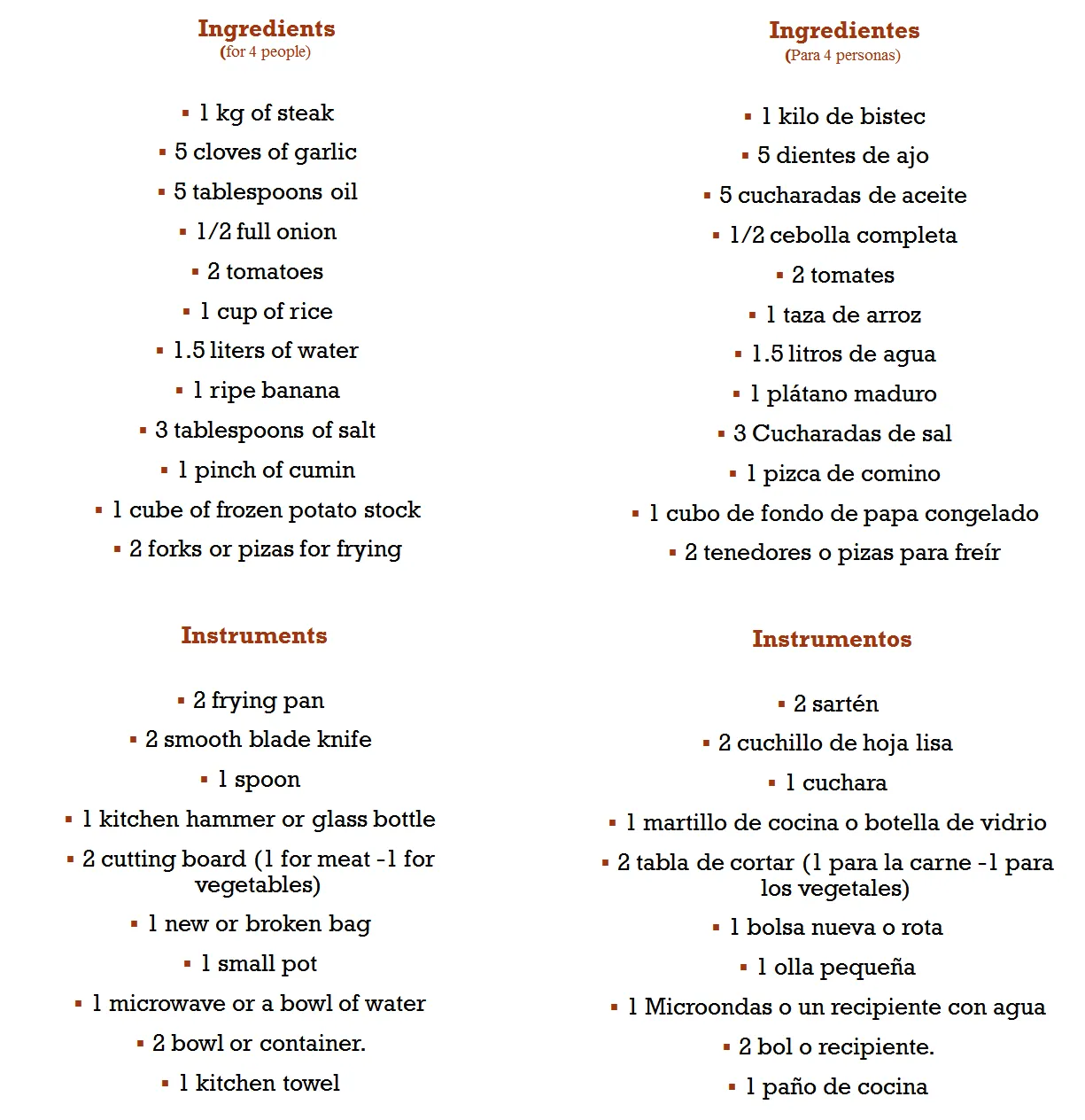
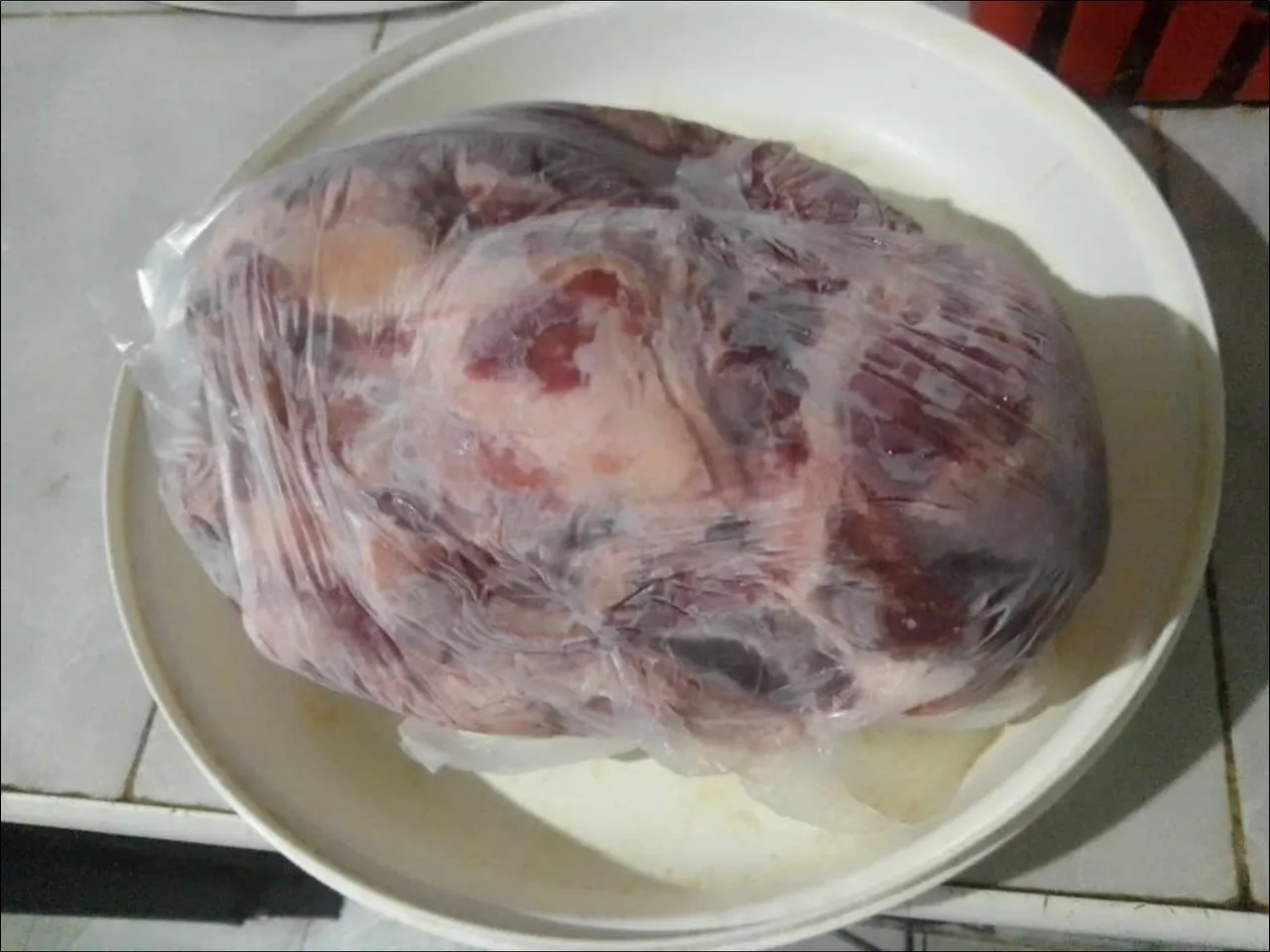
1 - Defrosting the meat slowly from one day to the next in the lower part of the refrigerator would be adequate, but when you forget to do it the night before, use a container full of water and submerge the bag with the meat for 4 hours, it helps to that the steaks can be easily separated by hand and thus able to make the cuts. Another way or alternative to defrost the meat is using a microwave, taking care that the meat is not cooked in the process, they usually bring a "defrost" button although you have to be careful in the same way.
1 - Descongelar la carne lentamnte de un dia para otro en la parte inferior del refrigerador seria lo adecuado, pero cuando se te olvida hacerlo la noche anterior, usar un recipiente lleno de agua y sumergir la bolsa con la carne por 4 horas, ayuca a que los bistec se puedan separar fácilmente con la mano y asi poder realizar los cortes. Otra forma o alternativa para descongelar la carne es utilizando un microondas, teniendo cuidado de que la carne no se cocine en el proceso, suelen traer un boton de "descongelar" aunque de igual forma hay que tener cuidado.
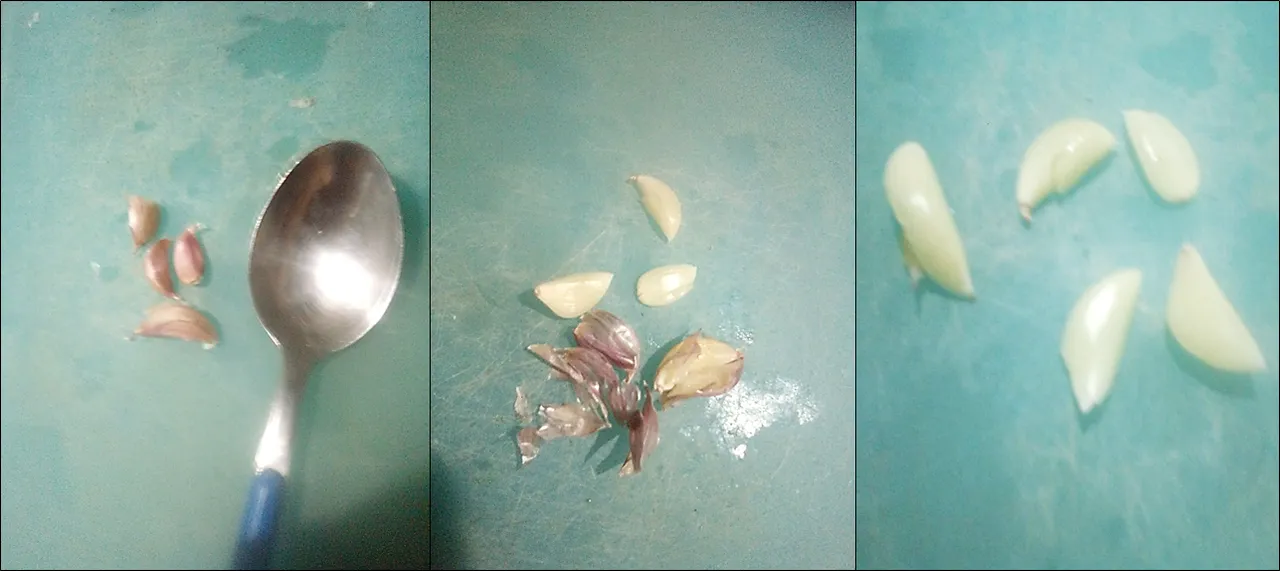
2 - While the meat is defrosting we proceed to peel garlic cloves with a simple technique, which consists of placing the garlic clove under the spoon and exerting a little pressure until we hear how the skin breaks, then we remove the skin with fingers and place the garlic cloves in a container to use later.
2 - Mientras se descongela la carne procedemos a pelar dientes de ajos con una sencilla técnica, la cual consiste en colocar el diente de ajo debajo de la cuchara y ejercer una pequeña presión hasta que escuchemos como la piel se rompe, luego quitamos la piel con los dedos y colocamos los dientes de ajo en un recipiente para utilizarlo mas adelante.

3 - Once the meat is defrosted, we separate the pieces that we are going to cook, then we proceed to place a damp cloth under the cutting board so that it does not move, we grab the knife and make cuts to separate the fat that we are not interested in have in the meat.
3 - Una vez descongelada la carne, separamos los pedazos que vamos a cocinar, luego procedemos a colocar un paño humedo debajo de la tabla de cortar para que no se nos mueva, agarramos el cuchillo y realizamos cortes para separar la grasa que no nos interesa tener en la carne.
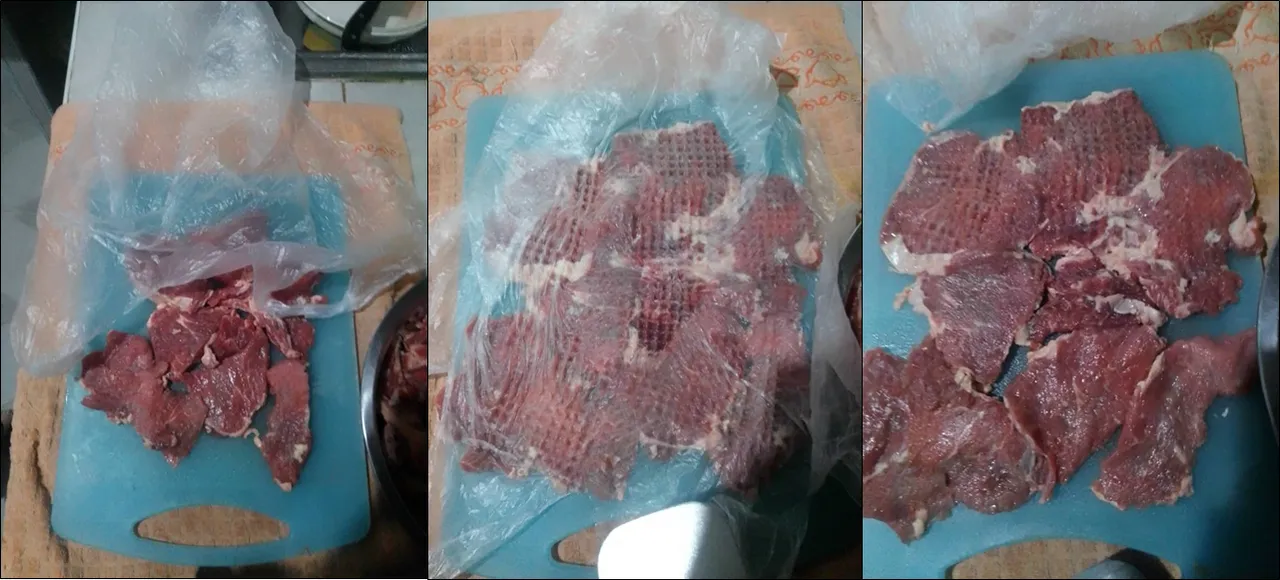
4 - We continue placing the meat on the table and cover it with a bag, if it is broken it does not matter since it is so that when we hit the meat with the hammer it does not splash its juices on our clothes, in addition and much more important it will serve for the meat does not stick to the hammer.
4 - Seguimos colocando la carne en la tabla y la cubrimos con una bolsa, si esta rota no importa ya que es para que cuando golpeemos con el martillo la carne no salpique sus jugos a nuestra ropa, además y mucho mas importante servirá para que la carne no se pegue al martillo.
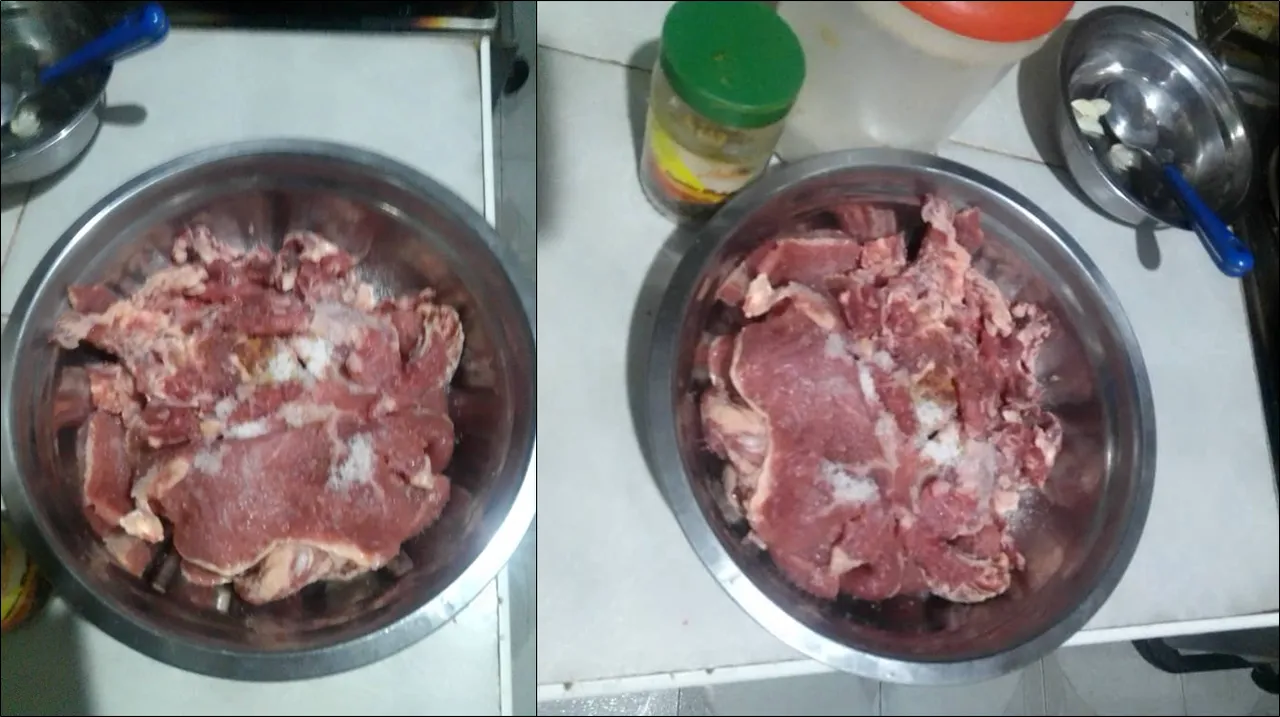
5 - To season this amount of meat I use 2 tablespoons of salt and a pinch of cumin, if you have it in the pantry you can put 2 tablespoons of soy sauce and / or 2 tablespoons of Worcestershire sauce. Then with your hands move all the meat so that the salt and cumin are spread evenly.
5 - Para sazonar esta cantidad de carne utilizo 2 cucharadas de sal y una pizca de comino, si se tiene en la despensa se le puede colocar 2 cucharadas de salsa de soya y/o 2 cucharadas de salsa inglesa. Luego con las manos mover toda la carne para que la sal y el comino se esparza de forma uniforme.
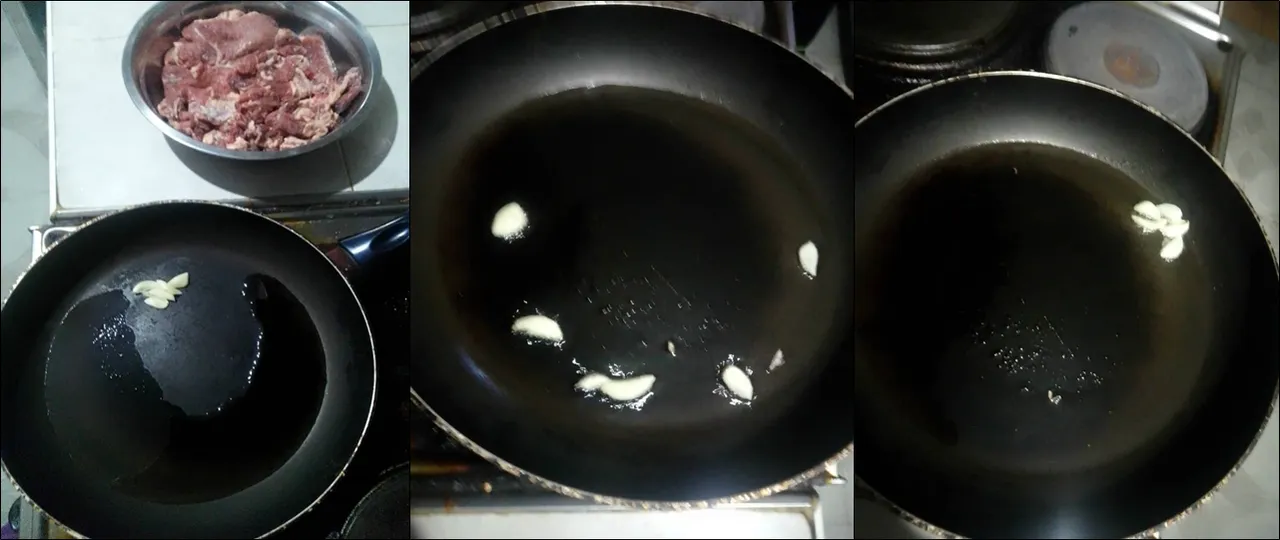
6 - For the meat to have more flavor, we place in the pan with the burner over medium heat 5 cloves of garlic in 4 tablespoons of oil. In order for the oil to acquire the flavor of garlic.
(The garlic cloves are removed from the oil when it turns a golden color)
6 - Para que la carne tenga más sabor, colocamos en el sartén con la hornilla a fuego medio 5 dientes de ajo en 4 cucharadas de aceite. Con el objetivo de que el aceite logre adquirir el sabor del ajo.
(Los dientes de ajo se retiran del aceite cuando este tome un color dorado)
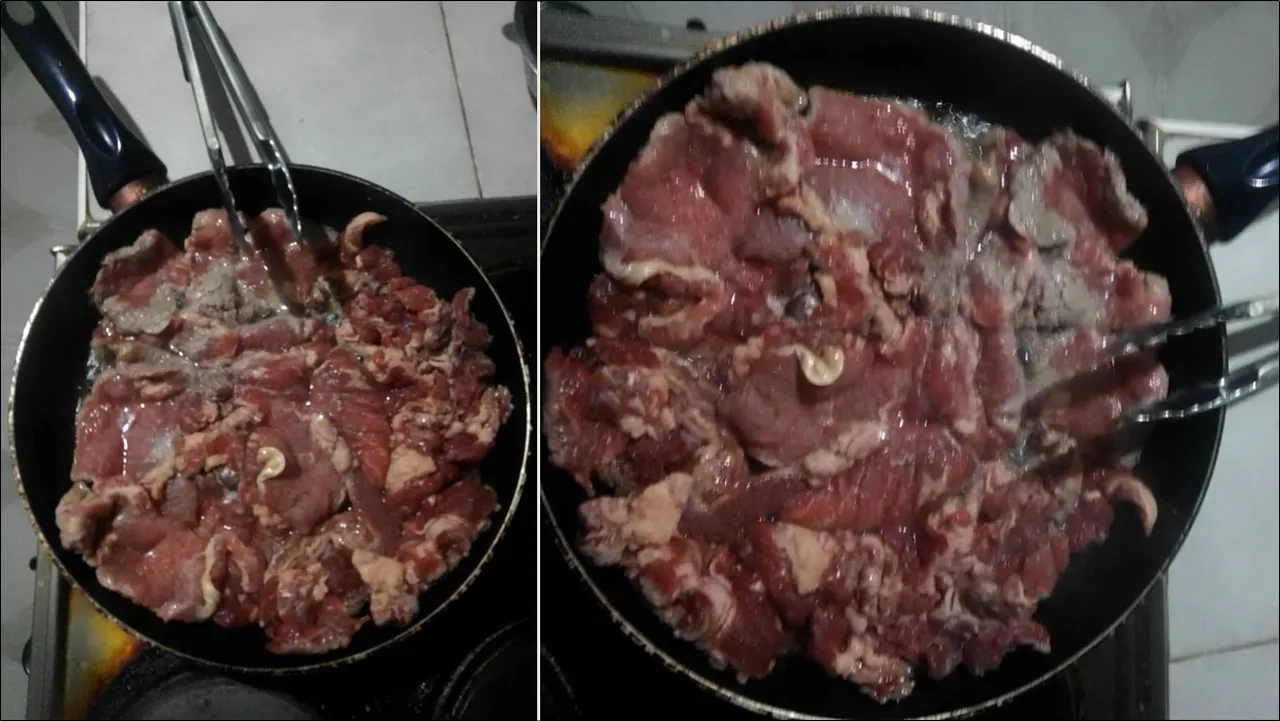
7 - We place the meat in the pan so that it begins to cook, at this point we will have removed the garlic from the previous part and we will raise the temperature of the burner a little.
7 - Colocamos la carne en el sartén para que comience su cocción, a este punto ya habremos retirado los ajos de la parte anterior y subiremos un poco la temperatura de la hornilla.
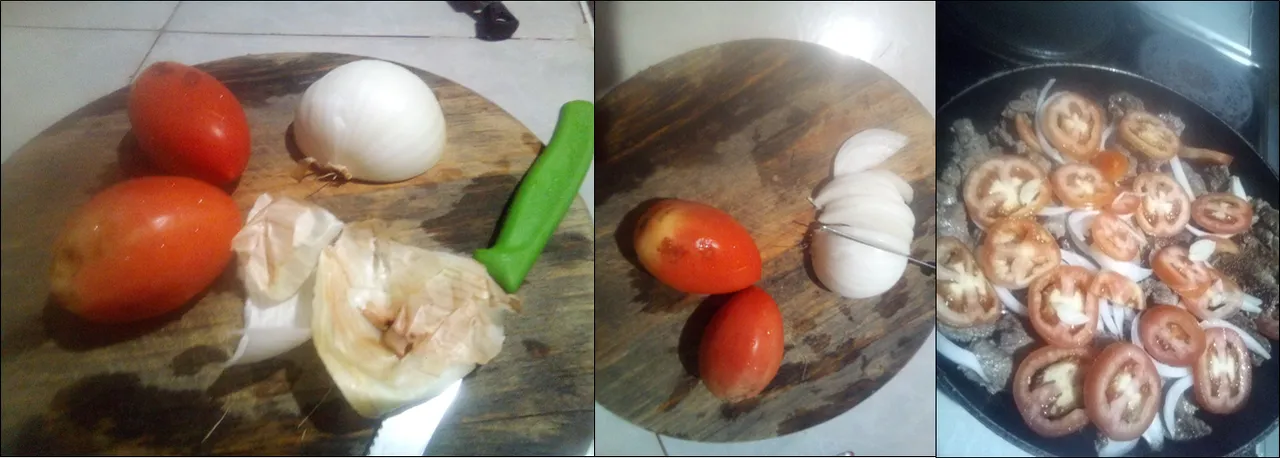
8 - We make julienne cuts to half an onion to obtain onion strips and in the case of tomatoes we cut it into slices or slices, then we place both the tomato and the onion in the pan with the meat
8 - A media cebolla le realizamos cortes en juliana para obtener tiras de cebolla y en el caso de los tomates lo cortamos en forma de rodajas o laminas, luego colocamos tanto el tomate como la cebolla en la sartén con la carne

9 - Small tip: The potato cooking bottom is obtained after placing water to boil in a pot with 2 or more potatoes. Preferably cut into cubes with a little salt, the water obtained from boiling the potato is placed in a tightly closed plastic bag or small container to take to the freezer so that it can be used as an extra seasoning in various recipes or simply as a natural thickener due to to the starch that the potato has.
9 - Pequeño consejo: El fondo de cocción de papa se obtiene luego de colocar en una olla agua a hervir con 2 o más papas. Preferiblemente cortadas en cubos con un poco de sal, el agua obtenida del hervido de la papa se coloca en una bolsa plástica bien cerrada o recipiente pequeño para llevar al congelador y así poderlo utilizar como un condimento extra en diversas recetas o simplemente como espesante natural debido al almidon que posee la papa.

10 - Culmination of the cooking of the sautéed meat with tomato and onion.If you want more browned meat, you can leave it over high heat for a while before adding the tomato and onion, however the idea is to get a very soft meat and humid without actually having a stew, so leaving it this way would be ideal.
10 - Culminación de la cocción de la carne salteada con tomate y cebolla.Si se qiere mas dorada la carne se puede dejar a fuego alto un rato mas antes de agregar el tomate y la cebolla, no obstante la idea es conseguir una carne muy suave y humeda sin llegar a tener un guiso, asi que dejarla de esta manera seria lo ideal.
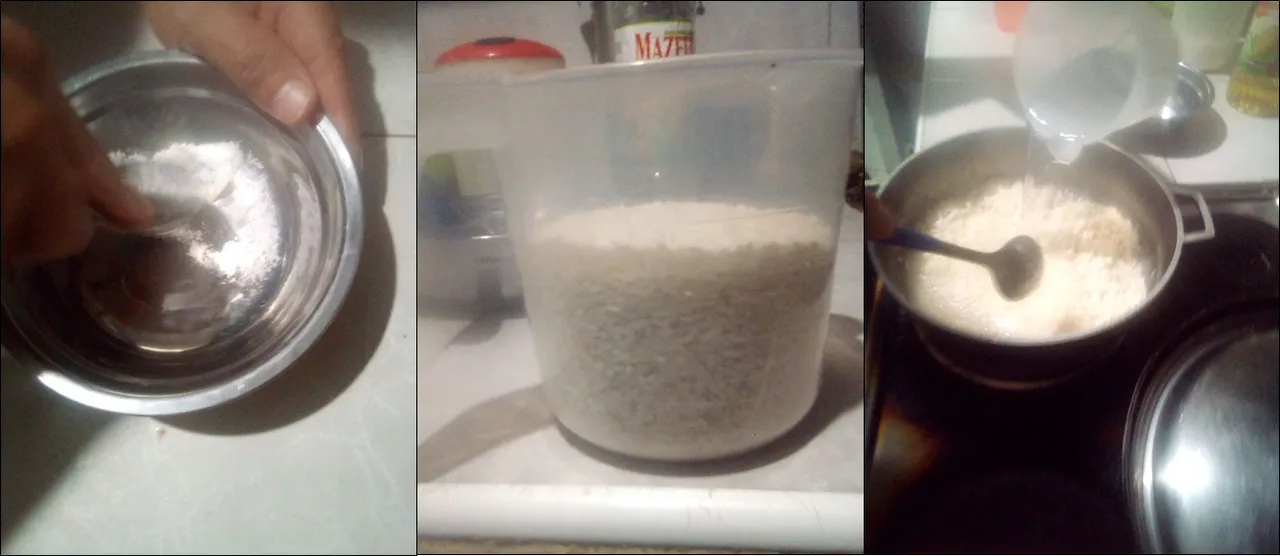
11 - In a container with the 5 previously cooked garlic cloves we place a tablespoon of salt and then crush it while stirring and then place it in the pot over medium heat with a tablespoon of oil. Then we take the amount of rice that we are going to cook, in this case 1 cup of rice was used. It is important to read the instructions on the back of the package, in my case it says that 1 and 2/3 of water are used for 1 cup of rice and 15 to 20 minutes of cooking. It should also be noted that everything will depend on the diner, the perfect cooking point that he believes is correct is the right one, in our case we like it well cooked and that it is still loose. We recommend using the instructions on the packaging as a base and then adding or removing water to achieve our ideal point in the following meals.
11 - En un envase con los 5 dientes de ajo cocidos anteriormente colocamos una cucharada de sal para luego aplastarlo mientras se remueve y posteriormente colocarlo en la olla a fuego medio con una cucharada de aceite. Luego agarramos la cantidad de arroz que vamos a cocinar, en este caso se utilizó 1 taza de arroz . Es importante leer las instrucciones en la parte de atras del empaque, en mi caso dice que para 1 taza de arroz se utiliza 1 y 2/3 de agua y de 15 a 20 minutos de coccion. Cabe destacar tambien que todo dependerá del comensal el punto perfecto de coccion que crea correcto es el adecuado, en nuestro caso nos gusta bien cocido y que aun se mantenga suelto. Recomendamos utilizar las intrucciones del empaque como base y luego ir añadiendo o quitando agua para conseguir nuestro punto ideal en las siguientes comidas.
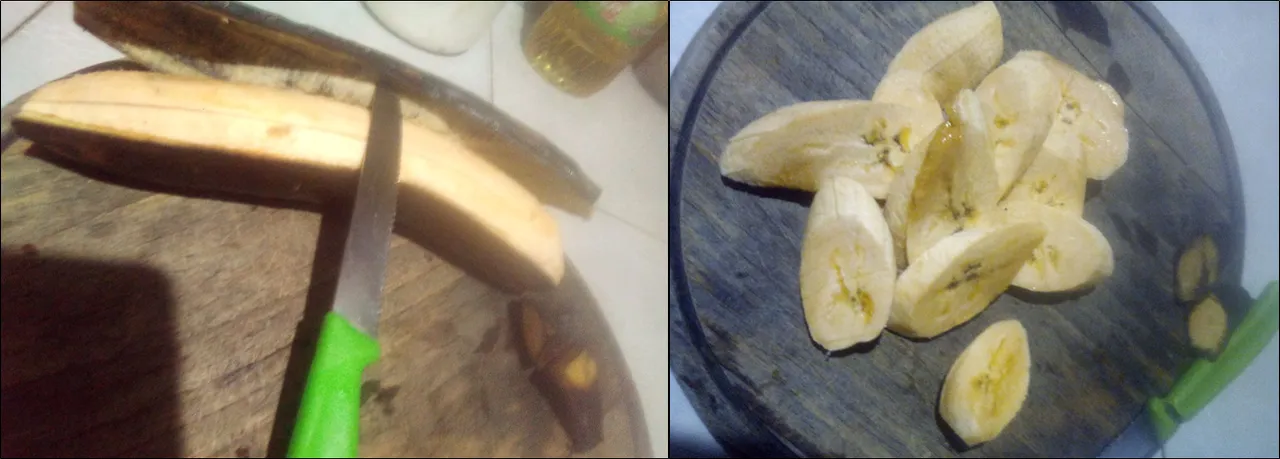
12 - A ripe male banana is placed on a cutting board and cuts are made along or at an angle, keep in mind that the smaller the cuts, the more work it will do when frying them. For two or 4 people it is fine to make cuts like the ones we did, although if you are going to cook for many more people, cutting lengthwise saves time when frying.
12 - En una tabla de cortar se coloca un plátano macho maduro y se realizan cortes a lo largo o en en forma inclinada, ten en cuenta que entre mas pequeños sean los cortes mas trabajo dará al momento de freirlos. Para dos o 4 personas esta bien hacer cortes como los que hicimos nosotros, aunque si vas a cocinar para muchas mas personas, hacer cortes a lo largo ahorra tiempo al momento de freir.
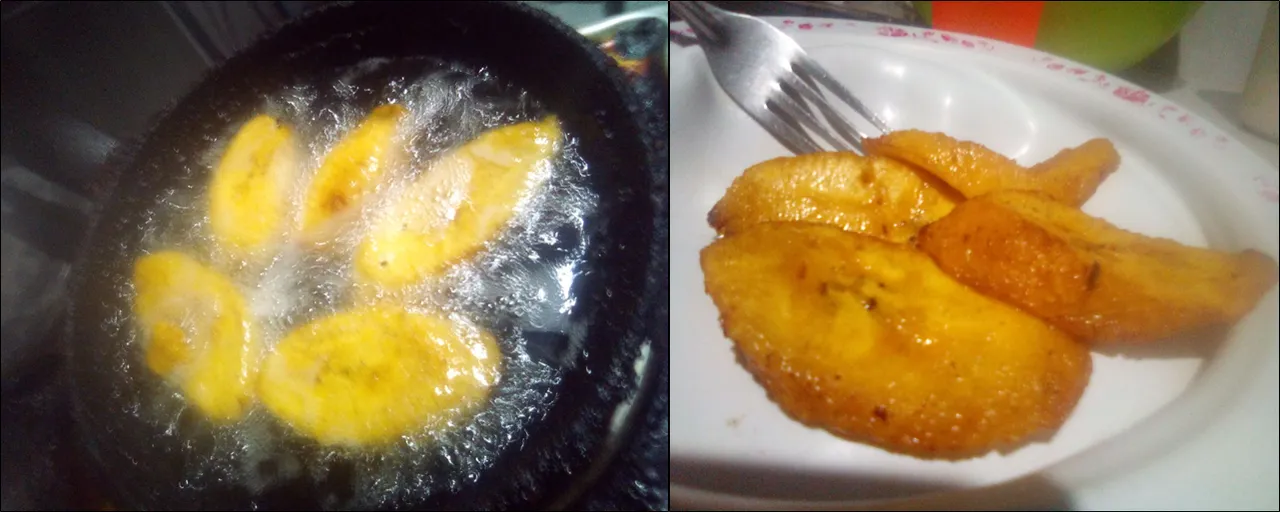
13 - In a frying pan with plenty of hot oil, place the already cut bananas to begin to fry until they acquire a golden hue. A good trick is to prick the banana with a fork and when you see that they are soft, remove them with two forks or tweezers. This will also depend on the degree of ripeness of the banana, so I recommend cooking over medium heat on both sides until golden.
13 - En un sartén con abundant aceite caliente colocamos los platanos ya cortados para comenzar a freír hasta adquirir un tono dorado. Un buen truco es pinchar el platano con un tenedor y al ver que están suaves ir sacadolos con dos tenedores o pinzas. Esto tambien dependerá del grado de maduracion del platano, asi que recomiendo cocinar a fuego medio por ambos lados hasta que esté dorado.

14 - To plate we can place arriz as a base and on top, pile the meat and fried plantains. Of course, this was for the photo, then we planted the rest.
14 - Para emplatar podemos colocar arriz como base y arriba ir apilando la carne y los platanos fritos. Por supuesto, esto fué para la foto, luego emplatamos el resto..
